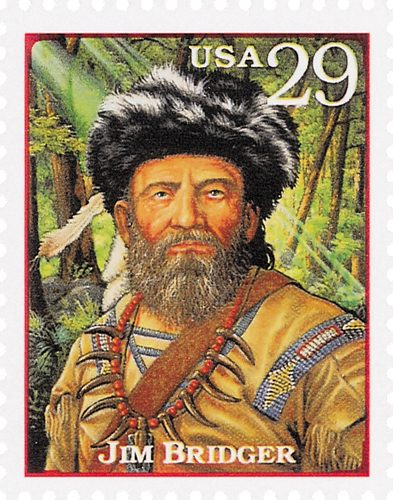
# 4901959 - 1994 Laramie Cancel, Jim Bridger PFCD
Often called the ultimate philatelic issue, the Fleetwood Proofcard is a distinctive commemorative with an elegantly embossed surface. Each Proofcard bears an original work of art complementing the theme of the stamp and created exclusively for Fleetwood by a leading American artist. Proofcards are often collected on their own, but would also make a beautiful addition to your existing stamp or cover collection.
Birth Of Jim BridgerÂ
Bridger’s family moved to St. Louis around 1812 but he was orphaned five years later at just 13 years old when both of his parents died. Bridger never received a formal education and couldn’t read or write so he was eventually apprenticed to a blacksmith.
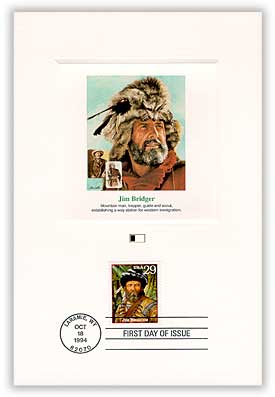
Bridger left his apprenticeship in 1822 to join the Upper Missouri Expedition. Part of the expedition included fur trapping, which captured Bridger’s interest. He would continue to work as an employee or partner in the fur trading business for the next 20 years. This work led him to travel extensively through Colorado, Idaho, Missouri, and up into Canada, blazing early paths across the West.
During his travels, Bridger became one of the first white men to witness the geysers and other natural wonders of the Yellowstone area. And during the winter of 1824-25, he became famous as the first European American to see the Great Salt Lake (though some suggest it may have instead been Étienne Provost). Tasting the water there, Bridger initially believed he’d found part of the Pacific Ocean.
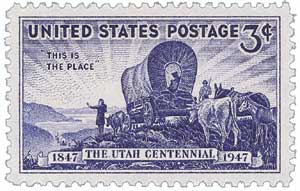
In 1830, Bridger and other trappers joined together to form the Rocky Mountain Fur Company. He also built a trading post, Fort Bridger in southwestern Wyoming. A supply station for emigrants traveling westward on the Oregon Trail, the fort also served as a fur-trading post, and later as a post for the U.S. Army.
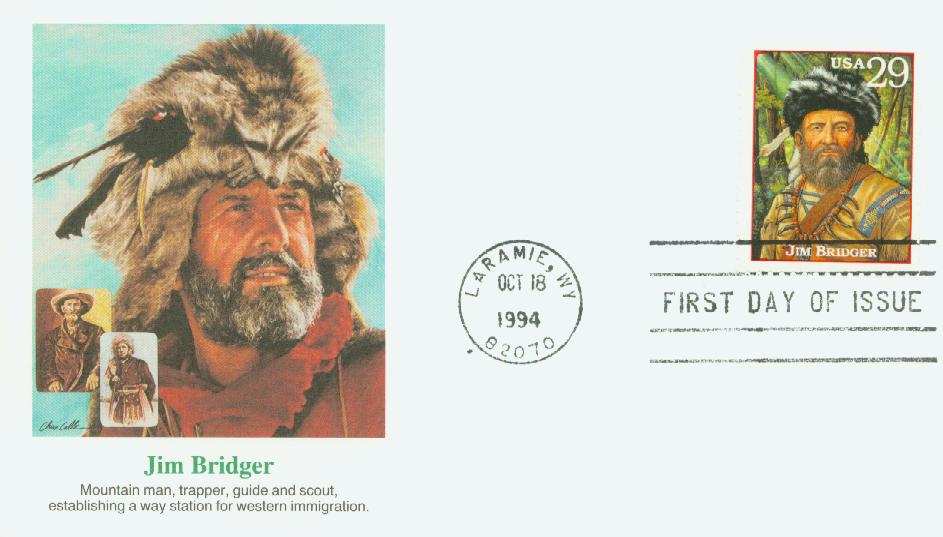
In 1850 Bridger began searching for a new overland route to the South Pass in the Rocky Mountains. He succeeded and named it Bridger’s Pass. This shortened the Oregon Trail by 61 miles and would later serve as the route for the Union Pacific Railroad.
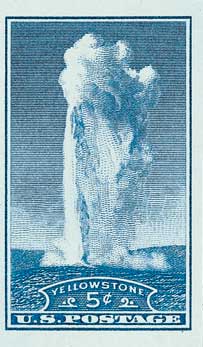
Equipped with an extensive knowledge of the area and its trails, Bridger also worked as a guide and advisor to groups traveling West. In 1859 he was hired to serve as the main guide for the Raynolds Expedition to Yellowstone. Though the trails were blocked by snow and they couldn’t reach Yellowstone, they did get to explore nearby Jackson Hole and the Teton Range.
In 1863, gold was discovered in Virginia City, Montana. The Bozeman Trail was developed to lead prospectors to the gold, but it passed through Native American territory and was subject to their raids. Bridger was then hired to lead an expedition to find a new trail. He succeeded and created the Bridger Trail. However, when hostilities along the Bozeman Trail grew worse, he was sent on the military’s Powder River Expedition to help put an end to the raids.
By 1865 Bridger was suffering from a number of health issues and was discharged from his military duties. He returned to Missouri and died in Kansas City on July 17, 1881. A number of natural sites have been named in his honor including the Bridger Mountains, Bridger Wilderness, Bridger Lake, and Bridger-Teton National Forest.
Click here for a map of “Old Jim Bridger’s Country.â€
Often called the ultimate philatelic issue, the Fleetwood Proofcard is a distinctive commemorative with an elegantly embossed surface. Each Proofcard bears an original work of art complementing the theme of the stamp and created exclusively for Fleetwood by a leading American artist. Proofcards are often collected on their own, but would also make a beautiful addition to your existing stamp or cover collection.
Birth Of Jim BridgerÂ
Bridger’s family moved to St. Louis around 1812 but he was orphaned five years later at just 13 years old when both of his parents died. Bridger never received a formal education and couldn’t read or write so he was eventually apprenticed to a blacksmith.

Bridger left his apprenticeship in 1822 to join the Upper Missouri Expedition. Part of the expedition included fur trapping, which captured Bridger’s interest. He would continue to work as an employee or partner in the fur trading business for the next 20 years. This work led him to travel extensively through Colorado, Idaho, Missouri, and up into Canada, blazing early paths across the West.
During his travels, Bridger became one of the first white men to witness the geysers and other natural wonders of the Yellowstone area. And during the winter of 1824-25, he became famous as the first European American to see the Great Salt Lake (though some suggest it may have instead been Étienne Provost). Tasting the water there, Bridger initially believed he’d found part of the Pacific Ocean.

In 1830, Bridger and other trappers joined together to form the Rocky Mountain Fur Company. He also built a trading post, Fort Bridger in southwestern Wyoming. A supply station for emigrants traveling westward on the Oregon Trail, the fort also served as a fur-trading post, and later as a post for the U.S. Army.

In 1850 Bridger began searching for a new overland route to the South Pass in the Rocky Mountains. He succeeded and named it Bridger’s Pass. This shortened the Oregon Trail by 61 miles and would later serve as the route for the Union Pacific Railroad.

Equipped with an extensive knowledge of the area and its trails, Bridger also worked as a guide and advisor to groups traveling West. In 1859 he was hired to serve as the main guide for the Raynolds Expedition to Yellowstone. Though the trails were blocked by snow and they couldn’t reach Yellowstone, they did get to explore nearby Jackson Hole and the Teton Range.
In 1863, gold was discovered in Virginia City, Montana. The Bozeman Trail was developed to lead prospectors to the gold, but it passed through Native American territory and was subject to their raids. Bridger was then hired to lead an expedition to find a new trail. He succeeded and created the Bridger Trail. However, when hostilities along the Bozeman Trail grew worse, he was sent on the military’s Powder River Expedition to help put an end to the raids.
By 1865 Bridger was suffering from a number of health issues and was discharged from his military duties. He returned to Missouri and died in Kansas City on July 17, 1881. A number of natural sites have been named in his honor including the Bridger Mountains, Bridger Wilderness, Bridger Lake, and Bridger-Teton National Forest.
Click here for a map of “Old Jim Bridger’s Country.â€




